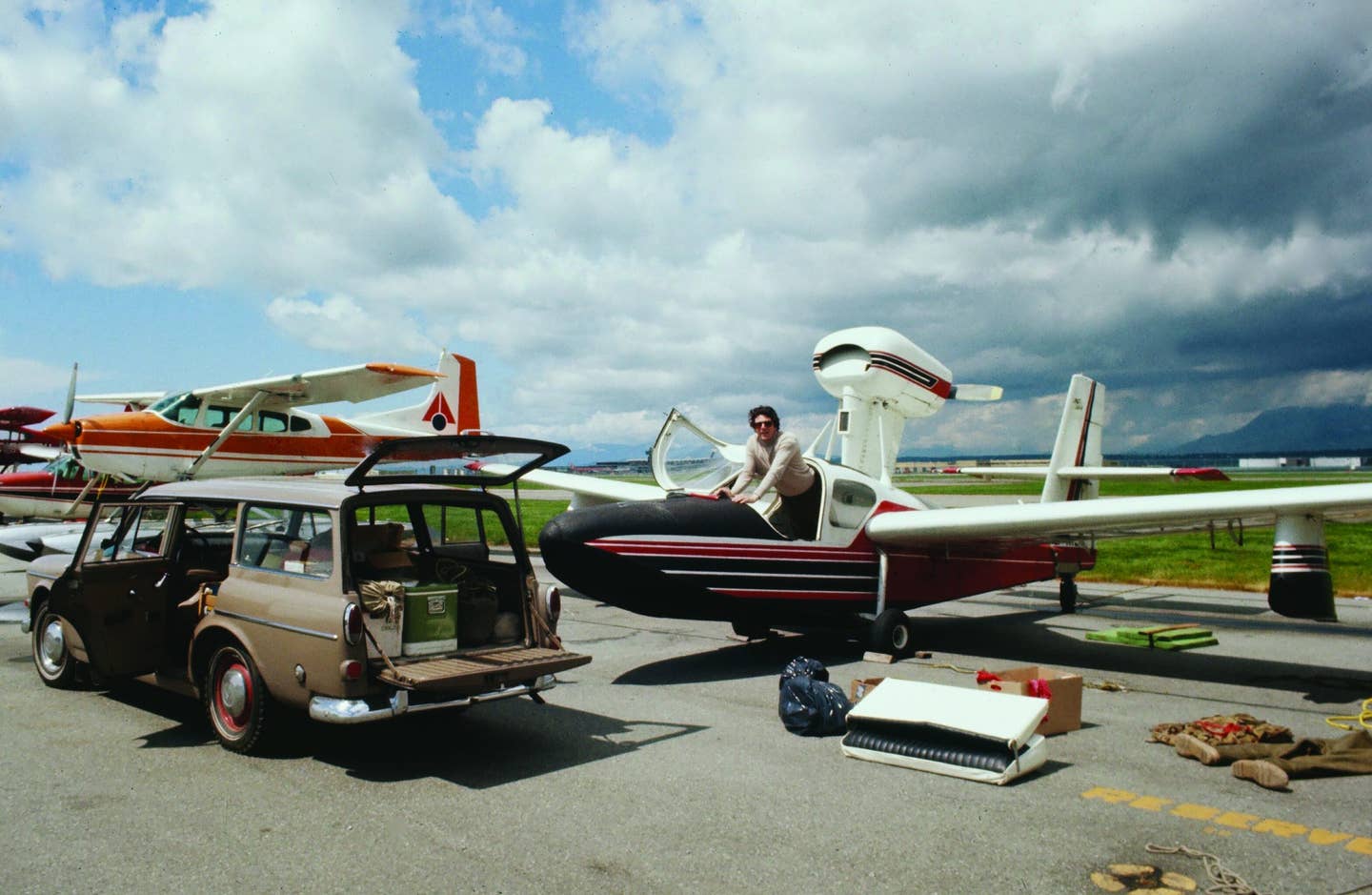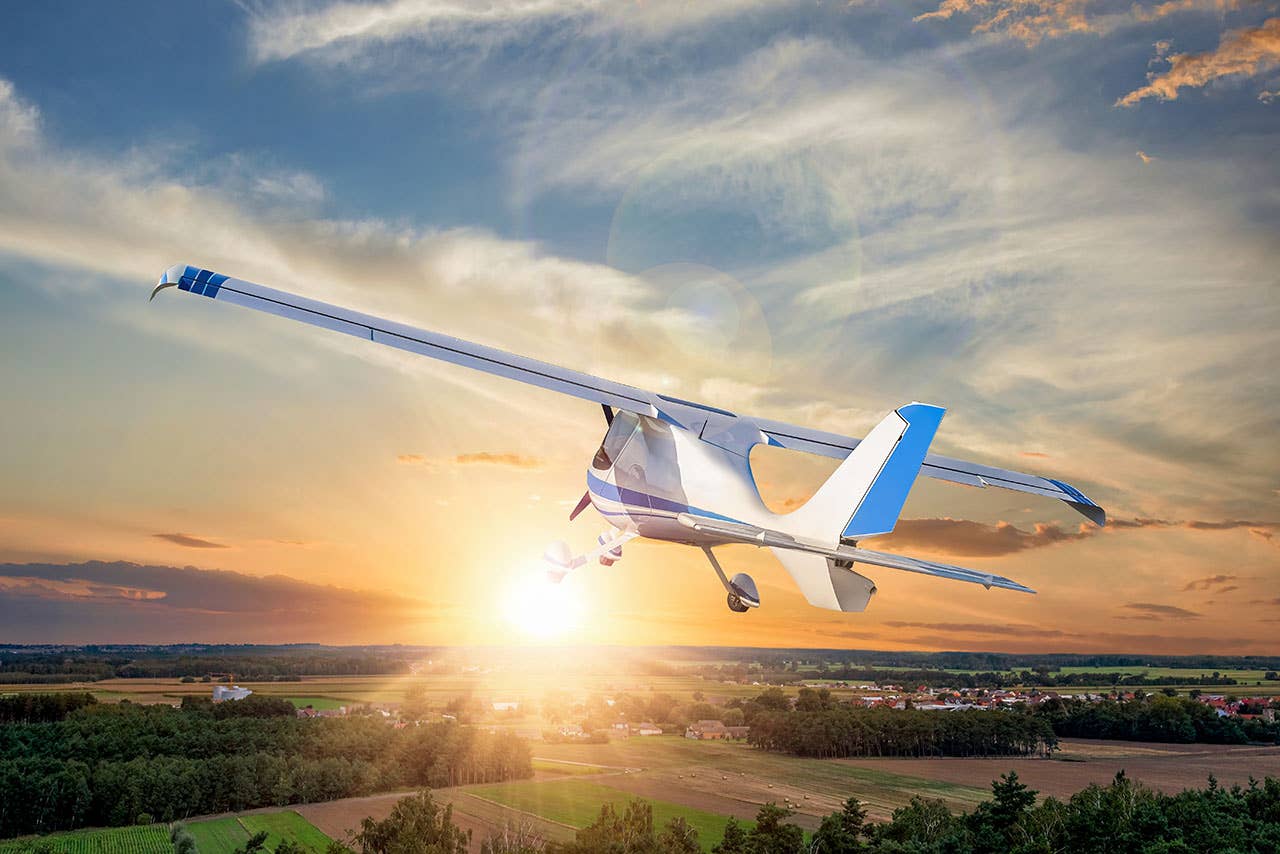Flying Broken Airplanes: The Substantial Risks Of Deferring Maintenance
Here’s how to think about components that aren’t working as they should, with some simple advice on what to do about them.
Ideally, everything that's part of our plane is supposed to be working before we go flying. Planes are designed with a minimum of extras to increase reliability and save weight. In the design of an airplane, each item has to do its part, and all superfluous pieces are (hopefully) engineered away. "Simplicate and then add lightness," said one great designer. Therefore, because every part of a plane has a larger-than-life importance, compared to many machines, aircraft must not be allowed to operate with something not working. So, does it follow that all of its parts are essential and must be present and working before flight?
Well, that's what the FAA thinks. To be in airworthy condition, our airplane must conform to the condition in which it was certificated originally or as specified by AD or a Supplemental Type Certificate. That means, if a part was installed and working when it left the factory, or has been functionally replaced under STC, it has to be operational for flight. Relief from such regulatory overkill can only be granted with approval contained in an Approved Minimum Equipment List, or if the inoperative item was shown as "optional" on the original paperwork.
"Oh, sure," derides the resident airport sage. "There ain't no such thing as a perfect airplane." As our aerial steeds age, things tend to wear out or break. Most planes more than few years old will have a bent piece of trim or a cracked fairing. And sometimes a burned-out lamp or balding tire is allowed to wait until the next scheduled maintenance is due or the shop has time to work it in. Many mechanics will suggest letting minor flaws wait until the next shop visit, to save the owner money and keep the floor clear for scheduled work. Meanwhile, the owner opts to fly with it "as is," justifying deferment of the repair or replacement as "no big deal."
As a fleet manager, I know airplanes break, and I know that taking the same plane out of service every week or so to fix something is a real hassle. Maintainers often wonder if the plane incurs more wear and tear in taking off the cowlings than by routine operation. At some point, however, we have to decide whether or not it's okay to fly with something in less than perfect order. So what if the decorative plastic instrument panel cover is cracked? Can't the plane be flown without it while it's getting fixed, with the instruments laid bare?
The short answer is "maybe;" if there's a required factory-supplied placard on the cover that contains some information about the aircraft's limitations, you can't fly without it. In that case, it's supposed to be there, for the pilot's enlightenment, although one might be able to fly if a replacement limitations placard is installed on the bare panel while the cover is off. But if the panel cover is purely decorative in nature, devoid of placards, it's okay to fly without it.
"As a fleet manager, I know airplanes break, and I know that taking the same plane out of service every week or so to fix something is a real hassle."
How do you determine what kinds of things you can fly without if they're broken? At the heart of the matter are the specified items in FAR Part 91, Subpart C, paragraph 91.205. In addition, items noted in the Type Certificate Data Sheet and items listed as "required" in the aircraft's equipment list have to be installed and operational. Beyond that, one gets into the "gray areas" reverting to the installed equipment that was on the aircraft when it received its certification. If you're not sure, get it fixed before flying.
How about making a flight with the heater control stuck in "off" position? Sure, it's summer, but what if you encounter a cold front and the cabin gets chilly, or you need the defroster to keep the windshield clear? I'm pretty sure the FAA would say the heater has to be operational. In any event, placarding and forgetting is inviting risk in the door. Putting an advisory placard on an inoperative item, to remind yourself or the next pilot that it's broken, is a wise, but potentially touchy, practice. Just make sure the item isn't something required for flight, like one of the two radios. You can't just placard a required piece of equipment and keep flying, in most cases.
Too Many Glitches
At some point, deferring maintenance gets out of hand. We may decide to let something go until the next oil change is due or the plane goes in for annual. Pretty soon, there will be two or three items that need fixing, and then a half-dozen, and then we start to forget what's working and what isn't. Old junk airplanes, of which I've flown a great many, are no fun to fly because they're ready to surprise you with a forgotten glitch. I hate having to remember to slam a baggage door into latching by holding it in a certain way. Or that this N-number has a weak left brake, while its sister ship has a soft one on the right.
Is it legal to fly with something not working as it should? The FAA takes a simple approach; any deficiencies must be fixed before flight. Even a test hop to see if the repairs were effective could be deemed illegal if the pilot knows there's a chance that something still isn't working at 100%. And the paperwork must be signed off before flight; saying "you can come back and pick the logbooks up later" is putting the pilot at risk of a violation.
But in the real world, the aircraft owner, and the pilot, must often make a judgment call. How soft a brake is "too soft," and how cracked is "too cracked?" Regardless, it had better be an informed judgment call, that is, not just to weigh the airplane's legal airworthiness but to ensure real airworthiness. Some things are more important than you think; if in doubt about whether or not an item is really necessary, you should ask a trusted source, someone who is willing to fly in the airplane with you on the strength of their advice. The owner is at risk for allowing the airplane to be flown with a deficiency, and the pilot has ultimate responsibility for making sure the aircraft is airworthy before flying it.
Are you an aviation enthusiast or pilot? Sign up for our newsletter, full of tips, reviews and more!
Make A Squawk List
How is this assurance of airworthiness to be done? A simple preflight inspection doesn't reveal more than the major, obvious shortcomings. You have to track maintenance requirements, and the status of any deferred items waiting to be given attention, in a manner that ensures nothing gets overlooked to the point of compromising safety. I like to maintain "squawk lists," even though keeping such a list invites litigious exposure if it is discovered after an accident. "Squawks" are write-ups left by a pilot who discovered something was not working, for the benefit of maintenance personnel and the next pilot who might try to fly the plane. Even if you're the only one who flies the aircraft, keep a list of things you want to get taken care of so you won't forget them.
Some squawks will be pretty minor but annoying, like a missing non-skid tread on a boarding step. Others are serious, like a tire that's nearly worn down to bare, and some, such as a missing fuel cap, effectively ground the aircraft. Keep the squawk list handy where you can make a note immediately upon discovery. Review it often, so you won't let it grow lengthy from neglect. Permitting one thing to pile up after another soon leads to an airplane that's so unfriendly to fly that you hate to take it out of the hangar. I've seen airplanes sit unused for just that reason.
The nature of the mission sometimes determines whether a squawk is minor or grounding in nature. Maybe you're fine with taking the airplane around the pattern to shoot a few landings around the uncontrolled field when a radio is acting up, but hopefully you wouldn't be comfortable leaving on a 500-mile trip into a high-density traffic area with such a glitch. You might make a breakfast flight without a working landing light but not a family visit that runs the risk of coming home in the dark. A non-functioning DME may be an annoyance for an iPad-guided flight in VMC, but it might be totally unacceptable for filing IFR in actual conditions, unless you can substitute an IFR-certificated GPS for it.
If a squawked item becomes more than annoying, it can move up the list toward "serious" status. Let's say the nosegear shimmied during one of your less-stellar landings in a strong crosswind. You'll probably write it down as something to be checked out at the first opportunity, since it only did it once. But if the shimmy occurs on the next flight, with the wind blowing down the runway or without any wind at all, and it does it entirely without provocation by the pilot, you had better get it fixed before flying again.
Putting something on the "to do" list requires that you know an abnormality exists. Make it a habit to check seldom-used items for proper operation. I have three airplanes with panel-mounted quartz clocks frozen in immobility. I've never had a pilot complain about those clocks; I suppose they habitually look at their phone if they want to check the time. Yet an installed clock must be operational for the airplane to be legal for IFR flight. Obviously, the stopped clock belongs on the squawk list, even though it may not be considered a serious shortcoming for most, if any, trips.
And be sure to keep an eye on the status of critical systems, making special note of changing trends, like the oil temperature needle that no longer sits in the middle of the green arc. Note where the "new normal" is indicating, and see if it moves further as the flight progresses. Log the tach reading when you add a quart of oil to bring the level back up to the usual amount; if you see the interval getting shorter, squawk the oil consumption for attention at the next shop visit.
Similarly, jot down some specifics when squawking avionics problems. The frequency being used might be important, and how long the radio had been on when it failed could be of significance. Did the audio problem occur with both speaker and headphones selected or with just one or the other? About how far were you from the station when the course indicator froze or the "off" flag came on? Did it work okay in GPS mode but not VOR/LOC? Troubleshooting issues, especially intermittent ones, is tough when the technician has little to go on.
Don't rely on memory alone to keep track of the busted items on your airplane. If you're going to defer maintenance for the sake of convenience, make sure it's an allowable, not-required component. Whatever it is, write it up on the squawk list and keep the list current. Never, ever allow the safety of a flight to be compromised by flying with a non-functioning part. In the FAA's dream world, aircraft are never flown with an inoperative, or partially working, component. That's a good goal, but some pilots are put in a position where they need to insist "it was working" when they left.
Sure, there's no such thing as a perfect airplane. Just remember, as you're managing the flaws of yours, don't let the length of that deferred list, or the seriousness of the items squawked, to get out of hand because far more is at stake than just the legality of it.

Subscribe to Our Newsletter
Get the latest Plane & Pilot Magazine stories delivered directly to your inbox






